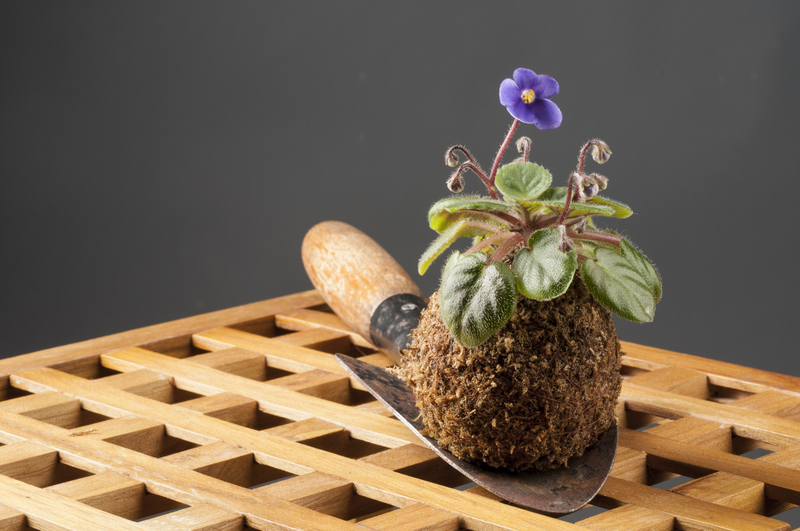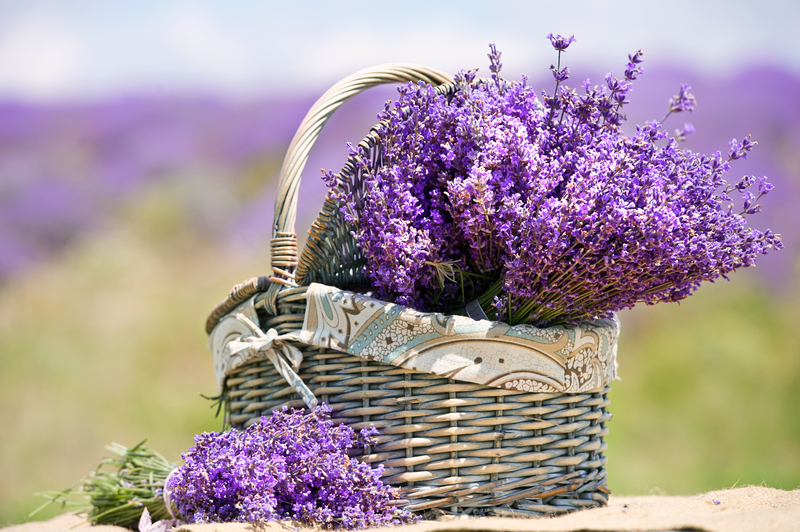Expert Advice for Crafting a Lush Moveable Garden at Home
Are you dreaming of a thriving oasis that can move with you or be easily rearranged at a whim? A moveable garden at home is the perfect solution for green thumbs with limited space, renters, or anyone craving gardening flexibility. With careful planning, expert strategies, and a little creativity, you can craft a lush moveable garden that flourishes year-round. In this comprehensive guide, we gather expert tips and tried-and-tested techniques to help you create your own portable bounty--whether you have a sun-drenched balcony, a cozy patio, or even an indoor corner.
Why Choose a Moveable Garden?
There are many compelling reasons to opt for a portable or moveable garden at home:
- Flexibility: Move plants to catch the best sunlight or protect them from harsh weather conditions.
- Space optimization: Perfect for small spaces or homes without access to traditional garden beds.
- Mobility: Ideal for renters--take your beloved plants with you when you move.
- Design freedom: Rearrange plants to freshen up your space or try new layouts with the seasons.
- Pest and climate control: Easily relocate plants indoors during cold snaps or away from garden pests.

Planning Your Lush Moveable Garden
Like all successful gardening projects, a lush and vibrant moveable garden starts with thoughtful planning. Experts advise you to assess your available space, climate, and personal style preferences before you start. Let's dive into each essential step.
1. Assessing Sunlight and Environmental Factors
Before choosing plants or containers, observe where you'll place your moveable garden. Track how many hours of sunlight each area receives:
- Full sun: 6+ hours daily
- Partial sun: 3-6 hours
- Shade: Less than 3 hours
2. Choosing the Right Containers for Mobility
Selecting containers specifically designed for movable gardening is crucial. Experts recommend:
- Materials: Lightweight resin, plastic, or fiberglass containers are easier to move than heavy stone or terra cotta. Consider self-watering planters for low-maintenance care.
- Size and Shape: Opt for containers large enough to support healthy root growth, but stable enough to avoid tipping over in the wind. Rectangular or square containers are space-saving for clustered arrangements.
- Mobility Features: Look for built-in wheels, handles, or plant caddies for larger pots.
- Drainage: Choose pots with adequate drainage holes to prevent waterlogged roots and root rot.
3. Soil Selection for Moveable Gardens
Healthy container gardens start with high-quality soil. Regular garden soil is often too dense for pots and can harbor pests. Experts recommend:
- Potting Mix: Choose a premium organic potting mix specifically designed for containers. These are lightweight, retain moisture, and drain well.
- Custom Blends: For specialty plants (like succulents, herbs, or vegetables), consider custom mixes--cacti mix for succulents; moisture-retentive mix for veggies.
- Soil Amendments: Boost nutrition and structure with compost, coconut coir, or perlite.
Expert Strategies: Plant Selection for a Thriving Portable Garden
1. Best Plants for Moveable Gardens
Portable gardens thrive when you choose plants suited to container life. Expert gardeners suggest:
- Herbs: Basil, mint, chives, thyme, and parsley are compact and productive.
- Edible Greens: Lettuce, spinach, arugula, and kale offer continuous harvests in planters.
- Compact Vegetables: Cherry tomatoes, dwarf peppers, bush beans, and radishes grow well in pots.
- Flowering Annuals: Petunias, marigolds, pansies, and impatiens create instant color.
- Foliage Plants: Ferns, coleus, and hostas thrive in shade or partial sun.
- Succulents and Cacti: Need little water--perfect for sunny indoor or outdoor windowsills.
2. Designing for Visual Impact
A lush moveable garden is as much about beauty as it is about function. For maximum impact:
- Layer Heights: Use tall plants (like ornamental grasses or upright flowers) in the back, mid-size in the center, and trailing varieties (ivy, sweet potato vine) to cascade over the edges.
- Color Coordination: Select a color theme--harmonious pastels or vibrant contrasts provide unity and visual flair.
- Seasonal Successions: Use cool-season and warm-season swaps so your garden stays lush all year.
- Focal Points: Highlight a striking plant, sculpture, or colorful pot to draw the eye.
- Cluster for Abundance: Group containers in odd numbers or staggered heights for a lush, abundant look.
3. Mixing Edibles and Ornamentals
A modern moveable garden blends productivity and aesthetics. Don't hesitate to combine edible plants with decorative ones--chard and kale offer bold foliage, while nasturtiums provide edible flowers and trailing tendrils. Experts love vertical planters and stackable garden systems for maximizing yields in small spaces.
Practical Tips: Maintenance and Care for Moveable Gardens
1. Watering Techniques for Portable Gardens
Because containers dry out faster than in-ground beds, consistent watering is essential.
- Check Soil Moisture: Stick your finger an inch into the soil--water only if it feels dry.
- Early Morning Watering: Reduces evaporation and fungal diseases.
- Mulch: Add a thin layer of compost, bark, or pebbles to retain moisture and insulate roots.
- Self-watering Containers: Great for busy gardeners or hot environments.
2. Feeding and Fertilizing Moveable Plants
Container-grown plants use up nutrients rapidly. Experts advise:
- Regular Feeding: Use a balanced, water-soluble fertilizer every 2-4 weeks during the growing season.
- Organic Options: Fish emulsion, seaweed extract, or compost tea nourish both edibles and ornamentals.
- Slow-Release Fertilizer: Mix into the potting mix before planting for long-lasting nutrition.
3. Pruning and Deadheading for Vigorous Growth
Put your best garden forward by regularly:
- Pinching Back: Prune herbs and trailing plants to encourage fuller growth.
- Deadheading: Remove faded flowers to prompt more blooms.
- Thinning: Cut back crowded seedlings to prevent spindly, weak plants.
- Cleaning: Remove yellowing leaves and spent stems to reduce pests and disease.
4. Pest and Disease Control in Portable Gardens
The beauty of mobile gardens is the ease of physical relocation, but vigilance is still needed. Tips include:
- Inspect Regularly: Check under leaves and near soil for pests like aphids or spider mites.
- Natural Remedies: Use insecticidal soap, neem oil, or hand-picking as first-line defenses.
- Good Airflow: Move containers to reduce humidity and prevent fungal outbreaks.
- Clean Tools: Sterilize shears and pots between uses.
Seasonal Adjustments and Garden Mobility
1. Adapting Your Moveable Garden with the Seasons
One of the greatest advantages of a portable home garden is rapid adaptation to changing seasons and weather. Expert gardeners recommend:
- Spring: Move containers outdoors as temperatures warm; switch to sun-loving annuals and start veggie seeds.
- Summer: Cluster pots in shadier spots as heat rises; increase watering and feed regularly.
- Autumn: Bring indoors or into sheltered areas before the first frost; plant mums or pansies for late color.
- Winter: Overwinter perennials indoors, check for pests, and reduce watering for dormant varieties.
2. Indoor Moveable Gardens: Bringing Greenery Inside
Want a lush mobile garden indoors? Select plants adapted to lower light, such as peace lilies, pothos, and snake plants. Use decorative rolling stands or tiered trolleys for effortless sun exposure through windows. Grouping several leafy plants creates a mini indoor jungle and boosts air quality.
Creative Ideas and Accessories for Moveable Gardening
1. DIY Mobile Plant Stands
Create your own mobile plant stand by attaching lockable casters to a wooden board or upcycled furniture. Nestle multiple pots on top for a moveable display that saves floor space and simplifies cleaning or rearranging.
2. Vertical and Hanging Solutions
Maximize every square inch with wall-mounted shelves, hanging baskets, or stackable vertical planters. These are particularly effective for growing herbs or compact flowers in small apartments or balconies. Consider using repurposed ladders, trellises, or macrame for a combination of form and function.
3. Garden Caddies and Wheeled Planters
Add garden caddies or wheeled saucers under heavy pots to make rearranging your mobile garden a breeze. Choose sturdy materials and check wheel locks for safety, especially on sloped patios or decks.
4. Lighting and Decor
Complete your lush moveable home garden with string lights, lanterns, or solar-powered spotlights for evening ambiance. Incorporate decorative stones, garden statues, or artistic pots to reflect your personal style and create a cohesive outdoor or indoor look.

Common Mistakes to Avoid in Portable Gardens
- Overcrowding plants: Give each plant enough space to thrive and avoid stressed, stunted growth.
- Poor drainage: Never skip drainage holes--standing water leads to root rot.
- Neglecting regular feeding: Remember, container plants exhaust nutrients quickly and need consistent replenishment.
- Ignoring weight limits on balconies or decks: Always check how much weight your structure can safely bear.
- Improper sunlight: Match plant choices to the genuine light available--misjudging sun needs leads to disappointment.
Conclusion: The Joys of a Moveable Garden at Home
Creating a lush moveable garden at home opens a world of flexibility, beauty, and edible bounty--no matter your living situation. With expert planning, the right containers, careful plant selection, and attentive care, your portable garden can thrive year-round, both indoors and out. Experiment with design, adapt to the seasons, and enjoy the satisfaction of an always-fresh, repositionable green haven.
Whether you're a seasoned horticulturist, a passionate foodie, or a city dweller in need of a gardening fix, the moveable garden lets you savor nature on your terms. Start small, stay curious, and let your portable paradise grow!
```